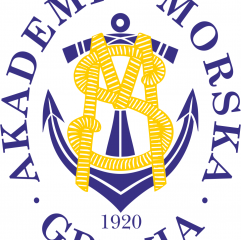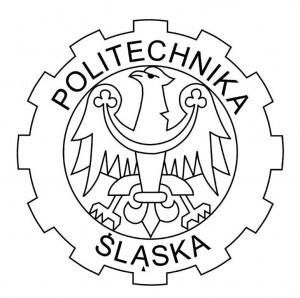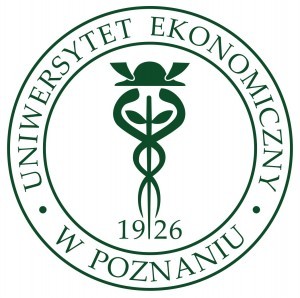Competency Centre of Metals Processing and Metallic Composites Zaawansowane systemy wytwarzania i materiały
Competency Centre of Metals Processing and Metallic Composites within Institute of Non-Ferrous Metals carries out research and development activity in the field of metals processing and materials science. The main directions of this activity include
– in technological aspect:
- application and development of powder metallurgy technologies for production of functional composite materials and nanocomposites,
- processing of powders and production of layers and functional coatings,
- application and development of technologies of severe plastic deformation for formation of structure and properties of alloys and metallic composites,
- development of liquid phase technologies for production of alloys and composites,
- application and development of rapid-quenching technologies for production of amorphous materials, nanocrystalline soft magnetic and soldering materials,
- production of magnetocaloric composite materials.
– in the material aspect:
- metallic-ceramic contact materials (silver, silver-free), semiconducting thermoelectric and piezoelectric composites (including substitution),
- biologically active coatings and hard heat-resistant coatings,
- new Zn-Al., Ti-Cu-Ni brazing alloys (air conditioning and automotive sectors),
- conducting, construction and soldering multi-layered wires and strips,
- copper-, zinc-, aluminium- and magnesium-based alloys and composites (continuous and semi- continuous casting),
- protective layers and coatings on aluminium alloys,
- anode materials for chemical power sources,
- soft magnetic strips and cores for electrical engineering, electronics and induction heating applications,
- amorphous binding materials (e.g. for automotive sector),
- magnetocaloric composites for air conditioning units (the objective: reduction of content of critical elements).
The Centre possesses strong research and technology facility in 3 IMN research and development Departments:
Department of Processing of Metals and Alloys,
Department of Powder and Composite Materials,
Department of Functional Materials
and in the IMN Divisions:
Light Metals Division in Skawina, Central Laboratory of Batteries and Cells in Poznań.
Team of specialists- researchers and modern equipment in the above-mentioned IMN units creates strong research and development potential, which determines potential of the Centre.
Dr inż. Barbara Juszczyk, Instytut Metali Nieżelaznych,
44-100 Gliwice, ul. Sowińskiego 5
tel.: 32 238 0552
e-mail barbaraj@imn.gliwice.pl
(Polski) Projekty realizowane przez IMN-CK „Przetwórstwo Surowców Mineralnych”/OT 8
w roku 2017, w ramach programu sektorowego CuBr
- Innowacyjna technologia przygotowania rudy miedzi do flotacji z wykorzystaniem wysokoenergetycznych technik rozdrabniania –
HIENGT
Konsorcjum:
Instytut Metali Nieżelaznych – lider, KGHM CUPRUM sp. z o.o. Centrum Badawczo-Rozwojowe, Instytut Podstawowych Problemów Techniki PAN , Politechnika Warszawska – Wydział Inżynierii Produkcji
- Optymalizacja klasyfikacji w hydrocyklonach w procesie wzbogacania polskich rud miedzi – OPTICLASS
Konsorcjum:
Akademia Górniczo-Hutnicza – lider, Instytut Metali Nieżelaznych
- Opracowanie wysokoefektywnej technologii wzbogacania polskich rud miedzi – HighCopper
Konsorcjum:
Politechnika Wrocławska – lider, IMN, WCB -EIT+, AGH, KGHM CUPRUM sp. z o.o. Centrum Badawczo-Rozwojowe , Politechnika Gdańska
- Opracowanie innowacyjnego rozwiązania technologicznego do procesu odmiedziowania żużla w procesie zawiesinowego otrzymywania miedzi – CleanSlag
Konsorcjum:
Instytut Metali Nieżelaznych – lider, AGH, Politechnika Śląska
- Projekt międzynarodowy w ramach inicjatywy KIC – Knowledge and Innovation Community for Raw Materials:
Technology for recovery of indium, germanium and tin from lead bearing alloys generated in zinc refinement for direct implementation in industrial practice – RIGaT
Publikacje naukowe pracowników IMN – CK „Przetwórstwo Surowców Mineralnych”/OT 8 w czasopiśmie „Rudy I Metale Nieżelazne – Recykling” w roku 2016 i 2017.
Usuwanie arsenu w postaci skorodytu metodą bezciśnieniowa, Z, Szołomicki, A. Chmielarz, J.Piwowońska, Rudy i Metale, R61, 2016, nr 2
Hydrometalurgiczny recykling akumulatorów Ni-MH i Li-ion, K. Becker, A. Chmielarz, M. Pokora, Z. Szołomicki i inni, Rudy i Metale, R61, 2016, nr 6,
Bilans cieplny procesu przerobu żużli poołowiowych w piecu TSL, E. Kolczyk, Z. Miczkowski, R. Prajsnar , Rudy i Metale, R61, 2016, nr 2
Technologia przerobu ołowiu bizmutowego na ołów surowy i stop Pb-Bi o zawartości powyżej 10% mas. Bi, A. Cybulski, R. Prajsnar, Rudy i Metale, R61, 2016, nr 7
Sposoby obniżenia zawartości srebra w katodach miedzianych otrzymywanych w procesie elektrolizy miedzi, J. Niedbała, D. Kopyto, W. Baranek, Rudy i Metale, R61, 2016, nr 10
Zastosowanie związków renu w katalizie, J. Malarz, K. Leszczyńska-Sejda, G. Benke, M. Ciszewski, Rudy i Metale, R61, 2016, nr 10
Rozwój światowych technologii odzysku renu, K. Leszczyńska-Sejda, G. Benke, D. Kopyto, M. Ciszewski, Rudy i Metale, R61, 2016, nr 10
Usuwanie arsenu w postaci skorodytu z wybranego materiału arsenonośnego metodą bezciśnieniową – skala ¼ techniczna, Z. Szołomicki, A. Chmielarz, J. Piwowońska, Rudy i Metale, R61, 2016, nr 11
Odzysk molibdenu ze złomów metodami hydrometalurgicznymi, D. Kopyto, K. Leszczyńska-Sejda, G. Benke, G. Wroński, Rudy i Metale, R61, 2016, nr 11
Odzysk miedzi z roztworów trawiących stosowanych w produkcji obwodów drukowanych. Cz. I: ekstrakcjajonowymiennajonów miedzi z roztworów chlorkowych, L. Gotfryd, D. Kopyto, G. Pietek, W. Baranek, K. Leszczyńska-Sejda, Rudy i Metale, R61, 2016, nr 12
Odzysk miedzi z roztworów trawiących stosowanych w produkcji obwodów drukowanych. Cz. II:elektrowydzielanie miedzi, D. Kopyto, L. Gotfryd, W. Baranek, G. Pietek, K. Leszczyńska-Sejda,
Rudy i Metale, R62, 2017, nr 1




















